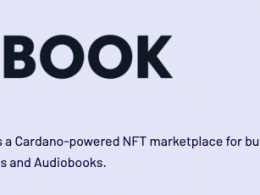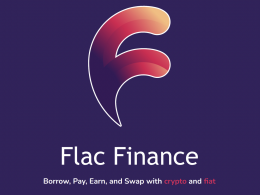“Decentralization is not just a feature—it’s a foundation” – Cardano Foundation.
One of the key activities in the Cardano ecosystem in 2024 was to help move the community towards a more decentralized mode of governance – one that provides equal participation to every ADA holder. This inclusive governance model has been key to Cardano’s future and long-term vision.
As part of this journey, the Cardano blockchain reached a historic milestone on February 19th, 2025 with the ratification of its first official constitution. This event marks a significant step toward decentralized governance, reinforcing the network’s commitment to transparency, community involvement, and self-sustainability. With an overwhelming 85% approval from the community, the newly enacted Cardano constitution establishes a framework for decision-making and governance within the ecosystem.
In this article, we’ll explore the key aspects of the Cardano Constitution, the ratification process, and its implications for the future of Cardano. But before that, here’s a primer on one of the main proposals leading up to the constitution.
CIP-1694 and the Birth of the Cardano Constitution:
For the most part, the governance model outlined in the Cardano Constitution sees it’s foundation in CIP-1694 (Cardano Improvement Proposal 1694). This proposal introduced the governance model that underpins the constitution, enabling decentralized decision-making through on-chain mechanisms.
CIP-1694 is a governance proposal designed to transition Cardano into its Voltaire era, where community-driven governance replaces centralized control. The proposal outlines:
- A governance structure with a Constitutional Committee, Delegated Representatives (DReps), and stake pool operators (SPOs) who collectively oversee decision-making.
- A voting mechanism for approving governance actions, including updates to the constitution and treasury fund allocations.
- On-chain governance execution, ensuring transparency and security in protocol upgrades.
CIP-1694 laid the foundation for the Cardano Constitution by defining the governance processes and stakeholder roles. The proposal underwent extensive community feedback through workshops and discussions, ultimately culminating in the ratification of the constitution. The governance model introduced by CIP-1694 is now enshrined in the constitution, ensuring that governance remains decentralized and community-led.
What is the Cardano Constitution?
The Cardano Constitution is a foundational governance document that outlines the principles, values, and processes that guide decision-making on the Cardano blockchain. It serves as a framework for decentralized governance, enabling stakeholders to participate in the evolution of the network in a structured and transparent manner.
The constitution is built on several core principles that align with Cardano’s broader vision of decentralized and community-driven development:
- Decentralization: Ensuring that governance is distributed among various stakeholders, reducing reliance on central entities.
- Transparency: Maintaining open and accessible governance processes.
- Inclusivity: Encouraging participation from diverse community members worldwide.
- Sustainability: Ensuring that governance decisions support the long-term growth and stability of the ecosystem.
- Security and fairness: Protecting the integrity of the blockchain while ensuring fair decision-making processes.
The Constitution Ratification Process
The journey to the official ratification of the Cardano Constitution was a two-year-long process that involved extensive community participation and deliberation. The rigorous process ensured that all stakeholders had the opportunity to shape the final governance framework through:
Community involvement
Over 1,800 participants across 50 countries were able to share their input while crafting the constitution. The development process included 63 constitutional workshops where stakeholders discussed the key governance principles and debated various proposals. This participatory approach ensured that the final document reflected the collective will of the Cardano community.
Constitutional convention
In December 2024, delegates gathered in Buenos Aires, Argentina, and Nairobi, Kenya, for the Cardano Constitutional Convention. This event served as the final discussion and approval stage before the official vote. The convention attendees overwhelmingly endorsed the constitution, with a 95% approval rating, reinforcing strong community consensus.
Final vote and approval
Following the convention, the interim constitution was put to a community-wide vote. The approval rate reached 85%, surpassing the required 75% threshold for ratification. This decisive support reflects the strong confidence in this governance shift.

Charles Hoskinson underscored the significance of such a strong consensus, stating,
Imagine the level of consensus you have to have to get 75% approval. We did it here and we did it across the world with people all around who came to know each other through the process.
Governance Structure Under the Constitution
With the enactment of the Cardano Constitution, the network transitions into a fully decentralized governance model. The governance framework includes several key components:
i. The Constitutional Committee
An Interim Constitutional Committee has been established to oversee the implementation and maintenance of the constitution. Initially, this committee comprises interim members who will serve until formal elections take place later this year. The committee is responsible for ensuring that governance decisions align with the principles outlined in the constitution.
ii. Stakeholder Participation
Cardano’s decentralized ecosystem includes over 800 decentralized stakeholders and more than 108,000 active delegators who participate in governance decisions. These stakeholders can propose and vote on network upgrades, funding initiatives, and protocol changes, ensuring that power remains distributed across the community.
iii. On-Chain Governance Mechanisms
The constitution is enforced through on-chain governance mechanisms, allowing for transparent decision-making and execution of proposals. This approach reduces the reliance on traditional off-chain governance structures and enhances security and efficiency.
Implications for Cardano’s Future
The ratification of the Cardano Constitution marks a transformative moment for the blockchain, with several implications for its future development and adoption:
- Strengthened decentralization: By formally adopting a governance framework, Cardano moves closer to achieving complete decentralization. Decisions regarding protocol upgrades and ecosystem initiatives will be made collectively by the community rather than a central authority.
- Enhanced security and stability: With a clear governance structure in place, Cardano is better equipped to address potential challenges and vulnerabilities. The constitution provides a structured process for resolving disputes and making adjustments to the network as needed.
- Increased institutional and developer confidence: The establishment of a transparent governance framework enhances Cardano’s credibility within the broader blockchain ecosystem. Institutional investors and developers may find the network more attractive due to its structured approach to governance and decision-making.
- A Model for future blockchain governance: Cardano’s governance model could serve as a blueprint for other blockchain networks seeking to implement decentralized decision-making. By demonstrating a successful community-driven approach, Cardano sets a precedent for how blockchain ecosystems can balance decentralization with effective governance.
What’s Next for Cardano Governance?
With the constitution now in effect, the next steps for Cardano’s governance evolution include:
- Elections for the Constitutional Committee: The interim committee members will be replaced through a formal election process later this year, ensuring community representation in governance decisions.
- Implementation of Governance Proposals: The community will begin leveraging the new governance framework to propose and vote on protocol improvements and ecosystem initiatives.
- Continuous refinement: As with any governance system, the Cardano Constitution will likely evolve based on community feedback and real-world implementation challenges.
Putting it all together
The enactment of the Cardano Constitution is a landmark achievement in blockchain governance. Through extensive community collaboration and a structured ratification process, Cardano has established a governance framework that empowers its global network of stakeholders. As the ecosystem moves forward, the constitution will play a pivotal role in shaping the network’s growth, ensuring transparency, decentralization, and long-term sustainability. This milestone reinforces Cardano’s position as a leader in decentralized governance, setting the stage for continued innovation and adoption in the blockchain space.










